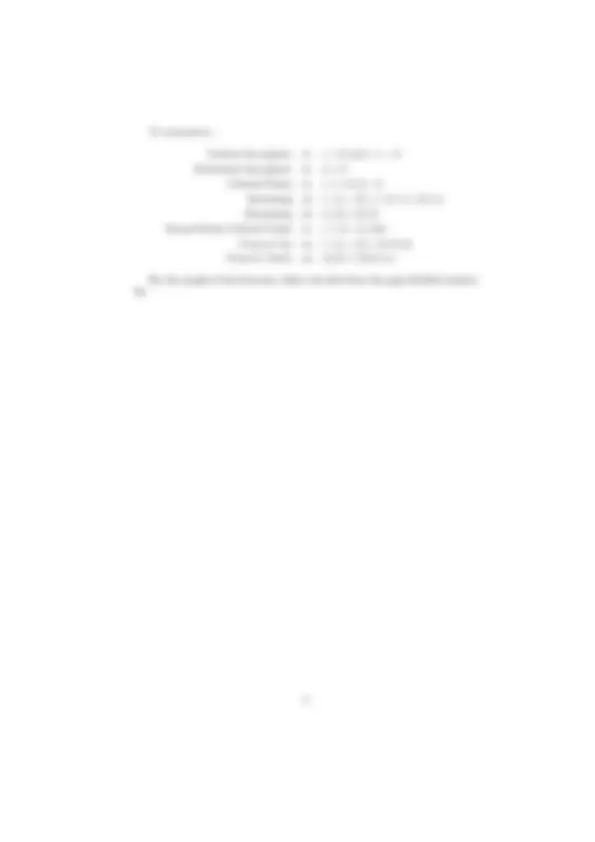



Study with the several resources on Docsity

Earn points by helping other students or get them with a premium plan


Prepare for your exams
Study with the several resources on Docsity

Earn points to download
Earn points by helping other students or get them with a premium plan
Community
Ask the community for help and clear up your study doubts
Discover the best universities in your country according to Docsity users
Free resources
Download our free guides on studying techniques, anxiety management strategies, and thesis advice from Docsity tutors
An in-depth analysis of the function f(x) = 2x²-5x+7. It covers the determination of vertical and horizontal asymptotes, critical points, and the concavity of the function. The document also includes information about the intervals where the function is increasing or decreasing.
Typology: Assignments
1 / 2

This page cannot be seen from the preview
Don't miss anything!


April 26, 2005
f (x) =^2 x
(^2) − 5 x + 7 x^2 − 9 The vertical asymptotes will occur where the denominator equals 0. This occurs when x^2 − 9 = 0 or when x = 1 and x = −1. The horizontal asymptotes will occur where the function has a limiting value in the long run. That is, what is
xlim→∞ f^ (x) and
x→−∞lim f^ (x) In both cases, the limit is 2, so there will be a horizontal asymptote at y = 2. Now we investigate the derivative
f ′(x) = 5(x(^ −x 2 9)( (^) − x9)^ − 2 1)
The critical numbers occur where the derivative equals 0 or does not exist. In this case, the critical numbers are
x = 1, 9 , 3 and − 3
These 4 numbers split the real number line into 5 intervals
(−∞, −3) , (− 3 , 1) , (1, 3) , (3, 9) , (9, ∞)
By testing the first derivative on each interval we see that the function is
Increasing on (−∞, −3) ∪ (− 3 , 1) ∪ (9, ∞) Decreasing on (1, 3) ∪ (3, 9) Now we investigate the second derivative
f ′′(x) = −10(x
(^3) − 15 x (^2) + 27x − 45 (x^2 − 9)^3
which has second order critical points at
x = 3, −3 and x ≈ 13. 2
By testing the second derivative on the appropriate intervals we find the function is
Concave Up on (−∞, −3) ∪ (3, 13 , 2) Concave Down on (3, 3) ∪ (13. 2 , ∞)
To summarize : Vertical Asymptote at x = 3 and x = − 3 Horizontal Asymptote at y = 0 Critical Points at x = 1, 9 , 3 , − 3 Increasing on (−∞, −3) ∪ (− 3 , 1) ∪ (9, ∞) Decreasing on (1, 3) ∪ (3, 9) Second Order Critical Points at x = 3, − 3 , 13. 2 Concave Up on (−∞, −3) ∪ (3, 13 , 2) Concave Down on (3, 3) ∪ (13. 2 , ∞) For the graph of this function, follow the link from the page labelled number